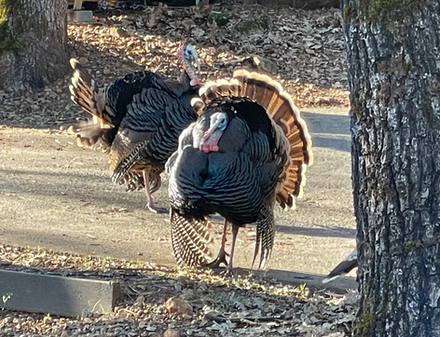
A Community Wildfire Protection Plan for the Cobb Mountain Area
Project Timeline: 2025-2027
Handy Links:
Cobb Forest CWPP Summit Kickoff June 7, 2025
On Saturday June 7, 2025, over 100 community members, speakers and exhibitors gathered on a balmy Saturday afternoon at the historic Little Red Schoolhouse in Cobb to help SSCRA kick off our two-year project to create a local "Community Wildfire Protection Plan" (CWPP) for the Cobb Mountain Area.
Request for Proposals: Consultant Information
Advisory Services for the Development of a Community Wildfire Protection Plan (CWPP) for the Cobb Mountain Area, Lake County CA
Date Issued: October 6, 2025
Proposal Due Date: November 3, 2025
Cobb Mountain Community Wildfire Protection Plan (CWPP)
In January 2025, the Seigler Springs Community Redevelopment Association (SSCRA) received a U.S. Forest Service contract to create a new Community Wildfire Protection Plan (CWPP) for the Cobb Mountain Area of Lake County, California. Building on local leadership since the 2015 Valley Fire, this Plan integrates wildfire risk reduction, ecological restoration, and community-based economic development.
PURPOSE & GOALS
ECONOMIC AND COMMUNITY BENEFITS
IMPLEMENTATION
AND LEGACY
The CWPP will identify and address wildfire risks specific to Cobb Mountain’s complex topography, vegetation, and settlement patterns. It will include a detailed action plan targeting priority evacuation routes, fuel-heavy parcels, and critical community infrastructure.
Key goals include:
-
Characterizing wildfire hazards through local data and science in collaboration with Tribal partners — including the Big Valley Band of Pomo Indians, Middletown Rancheria, and the Tribal Ecosystem Restoration Alliance (TERA)
-
Analyzing and planning long-term stewardship strategies informed by tribal knowledge and climate projections.
-
Developing local workforce and business capacity in forest management and ecosystem restoration.
-
Revitalizing ecology and culture through partnerships with Tribal Nations.
The Plan will include a draft of a Cobb Mountain Workforce and Business Development Strategy. This effort will look to create local jobs, strengthen forest-based enterprises, and connect economic opportunity with environmental health.
The CWPP will be developed in partnership with the Cobb Area Council’s Forest Stewardship Committee and integrated with Lake County’s 2023 CWPP. SSCRA will coordinate with the Lake County Community Development Department to align with countywide General and Area Plans as well as the county's new Housing and Climate Adaptation Plans.
By linking wildfire resilience, indigenous stewardship, and local economic renewal, the Cobb Mountain CWPP will model how rural communities can protect their forests—and their future.





